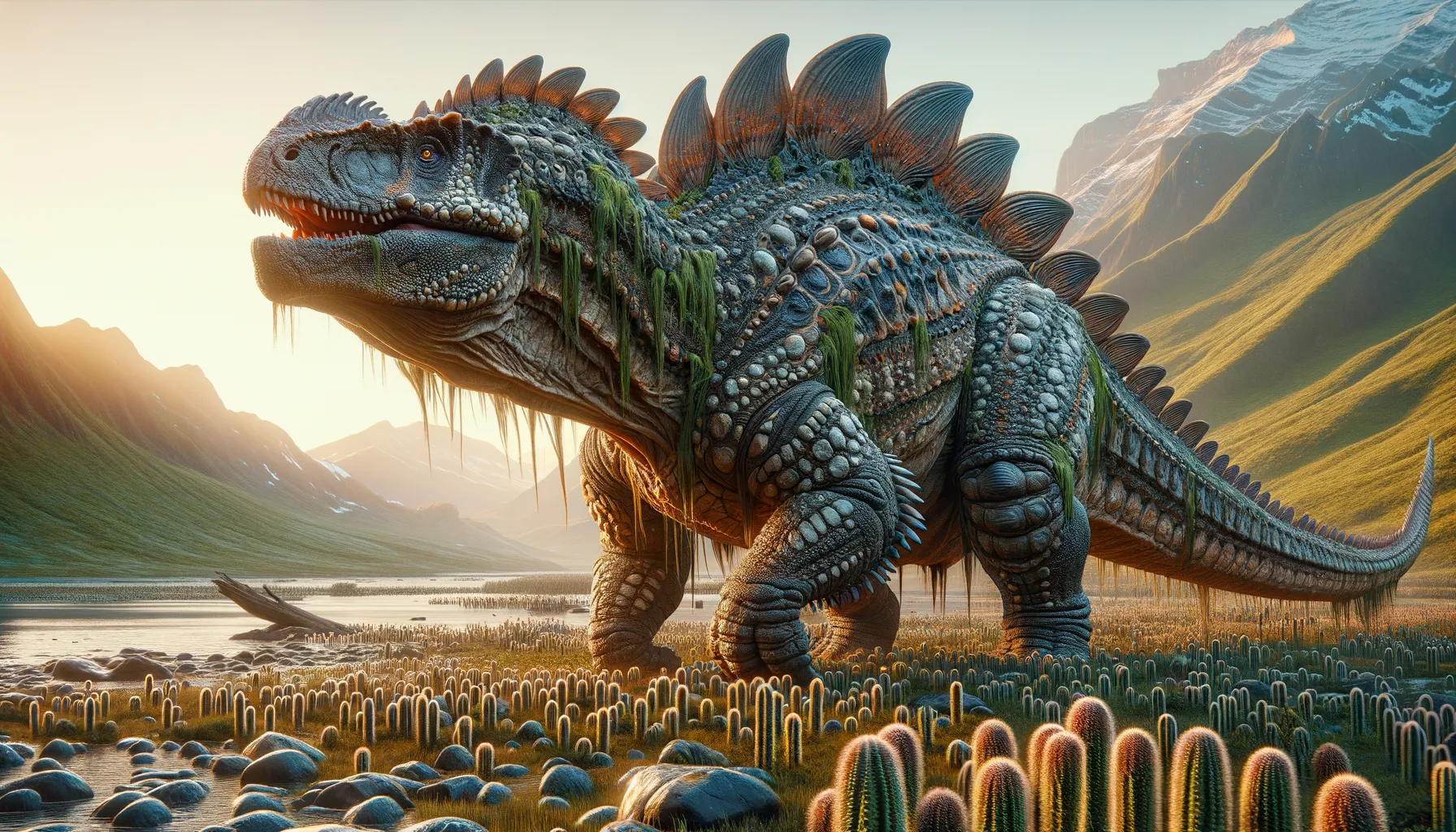
Pleuropeltus
Fully armoured and resilient, a true survivor!
Period
Jurassic
Length
Measured up to 6 meters in length.
Height
Around 2 meters tall at the shoulders.
Weight
Approximately 2 tons, similar to an elephant.
Pleuropeltus was a heavily armored dinosaur that roamed the landscapes of the Jurassic period. Known for its impressive protective armor, it had bony plates covering its body, making it a difficult target for predators. It primarily fed on low-growing vegetation and was a formidable presence in its ecosystem due to its size and robust defense mechanism. Fossil evidence suggests that Pleuropeltus was a slow-moving herbivore with remarkable longevity.
Diet
Pleuropeltus was a herbivore, feeding primarily on plants. Its diet consisted of ferns, cycads, and other low-lying vegetation. The dinosaur's teeth were adapted to grinding, making it efficient at processing tough plant material.
Hunting
As a herbivore, Pleuropeltus did not hunt other animals. Its main challenge was to find ample vegetation to sustain its large size. It utilized its size and armor for defense rather than hunting.
Environmental challenges
Pleuropeltus lived in a time of fluctuating climates and environments. Periodic droughts and limited food supply posed significant challenges to its survival. Its heavily armored body helped protect it from predators during these tough times. Evading predators and maintaining access to water sources were crucial for its survival.
Speed
Moderate speed, suitable for a large herbivore.
Lifespan
Lived for several decades, like many large dinosaurs.
First discovery
Discovered in the early 20th century in North America.
Fun Facts
- Pleuropeltus was a small dinosaur that lived during the early Cretaceous period.
- It was known for its distinctive armor plating, which likely helped protect it from predators.
- This dinosaur's name means 'side shield', referring to its unique body armor.
- Pleuropeltus was a herbivore, meaning it primarily ate plants.
- It lived in what is now modern-day Europe, giving us insight into the Cretaceous ecosystems of that region.
- Fossil evidence suggests that Pleuropeltus might have moved in herds for added protection and social interaction.
- Despite its small size, Pleuropeltus plays a significant role in understanding the diversity of armored dinosaurs.
Growth and Development
Pleuropeltus hatched from eggs, growing rapidly in its early years to reach a size that offered some protection from predators. Its development included the gradual thickening of its bony armor plates. Juveniles would stay in shaded regions to hide from predators until they grew larger and more self-sufficient.
Habitat
Pleuropeltus thrived in forested environments with abundant ferns and cycads. It preferred regions with a reliable water supply, such as riversides or lakeshores. Its habitat also included open, grassy areas where it could find scattered vegetation. Fossil evidence shows that it coexisted with various other herbivores and predators of its time.
Interaction with other species
Pleuropeltus shared its environment with both fellow herbivores and carnivorous predators. Its armor allowed it to graze near more aggressive species without constant threat. It likely moved in herds, which helped it to forge pathways through dense vegetation. Interacting with other herbivores might have involved competition for resources, yet mutual benefits arose from shared vigilance against predators.
Natural lifespan
Pleuropeltus was known to live relatively long lives, much like today's large mammals.
Reproduction
Pleuropeltus reproduced by laying clutches of eggs, which it likely buried in the ground to protect from predators and environmental extremes. Parental care, if any, would have been minimal after laying eggs, as seen in many reptiles today. Hatchlings were vulnerable at birth, relying on their instincts and the environment to provide the cover necessary for survival.
Social behaviour
Pleuropeltus was likely a social animal, preferring the safety of numbers in herds. Social interactions would have included mutual grooming and possibly collaborative defense efforts against predators. Its herding behavior also facilitated collective feeding, where individuals could strip areas of vegetation efficiently.
Fossil locations
Fossils of Pleuropeltus have been primarily found in the western regions of North America. The type specimen was discovered in sedimentary rock formations dated to the late Jurassic period. Additional fossil sites have expanded our understanding of its range and habitat preferences. Such sites include locations in the United States, offering insights into the paleoenvironments it occupied.
